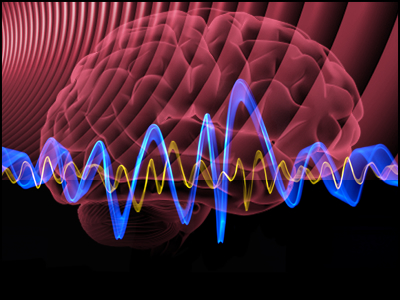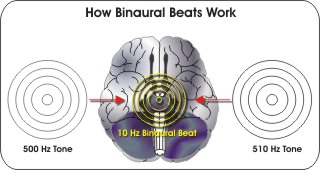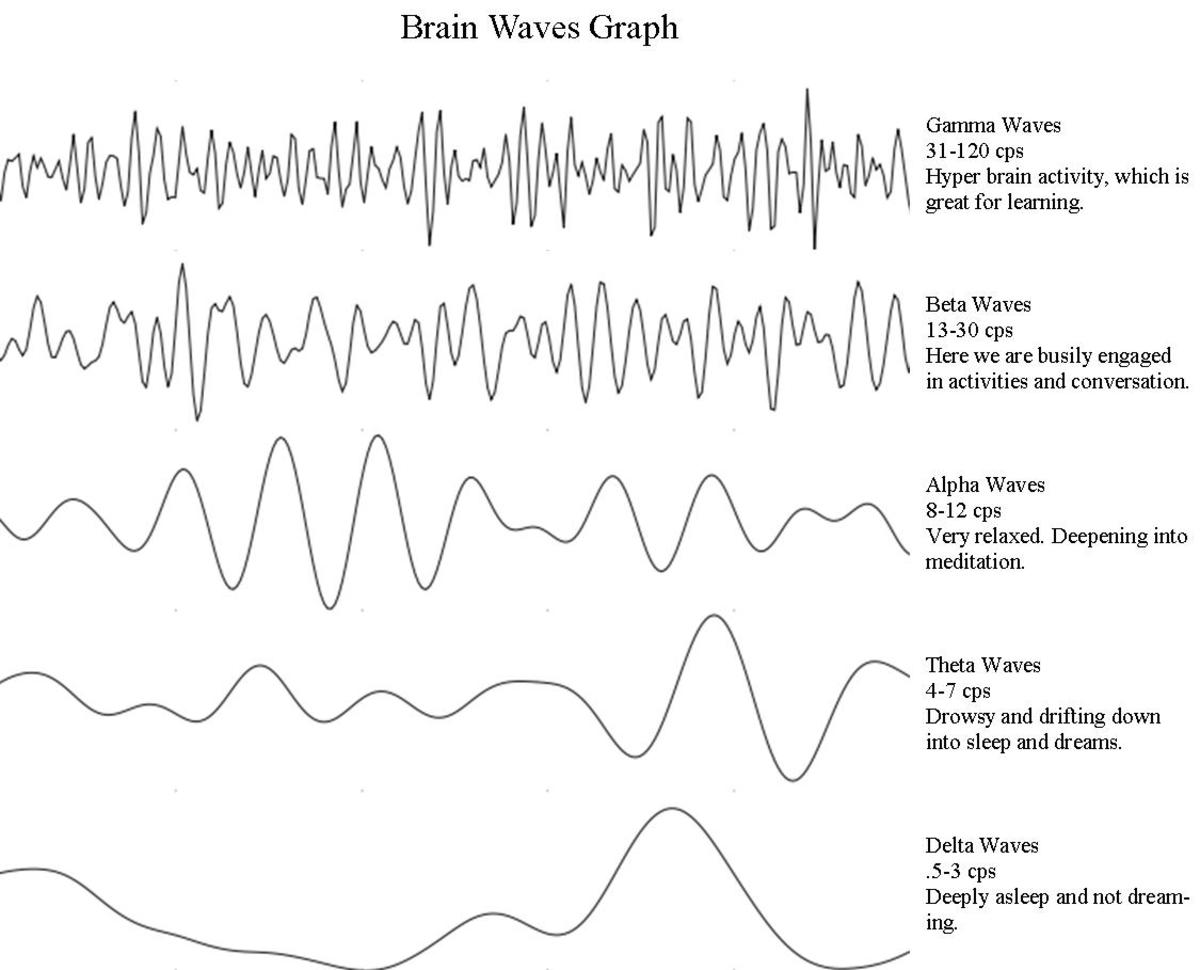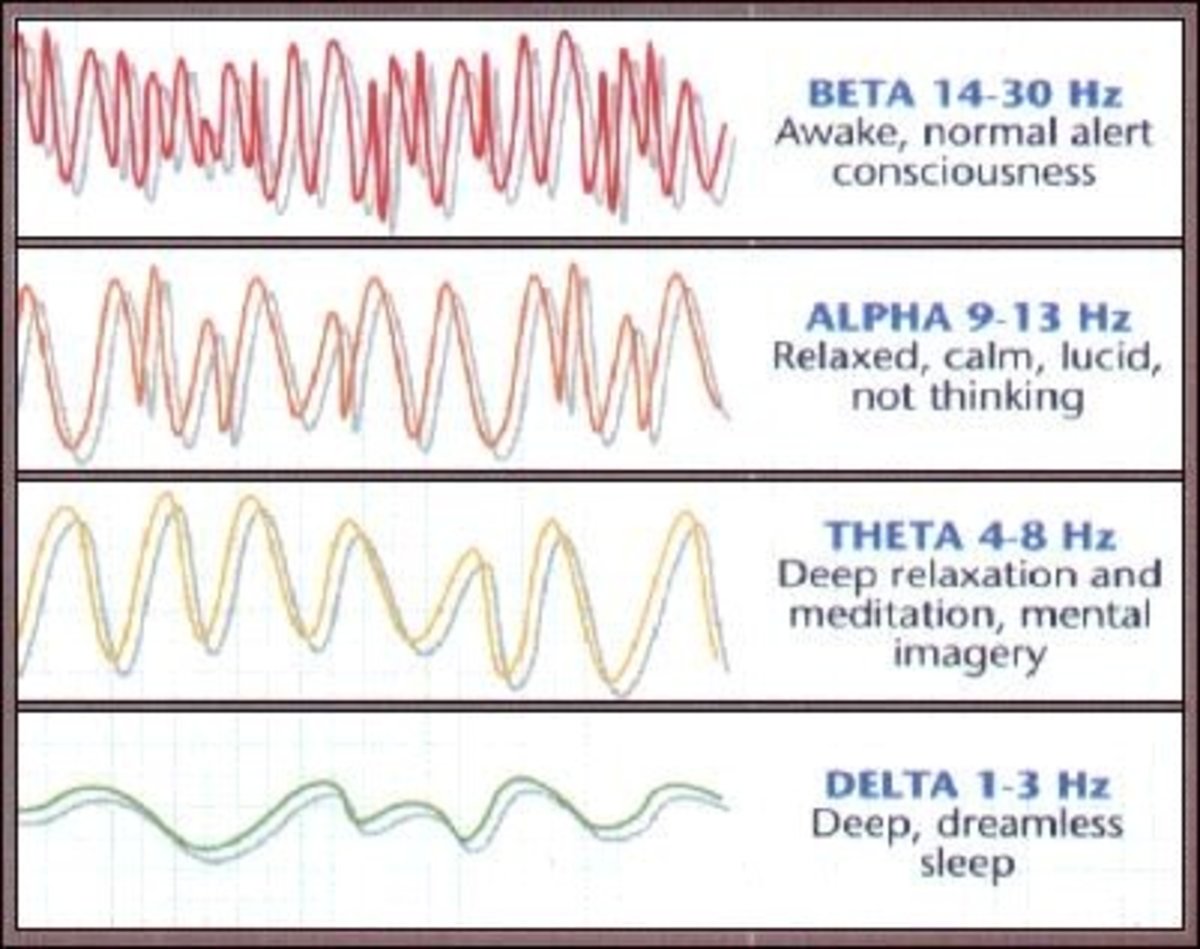Brain Wave Entrainment Technology: Say Good Bye to Stress

Stress is a Lifestyle Symptom
Our sedentary lifestyle leaves us quite vulnerable to anxieties and stresses of daily living. Right or wrong, even slight discomfort or pain scurry us to look for pain killers. Yet, the feelings of constantly fatigue, and restless don't want to leave. Often we can't put our acts together and night don't bring sleep despite the busy day, No wonder it leaves us feeling out of control and we merely go through the motions of the day. When this situation persists, it leads to degraded performance, anxiety disorders, disturbed metabolism, hormonal imbalances, weight imbalance, and so on. Quite often we find ourselves battling with low self-esteem, depression, and a sense of severe dissatisfaction.
Our brain talks to us through the its brainwaves, reflecting its current status. Under stress it emits certain high frequency brainwave patterns. Like wise relaxed mental states are accompanied by low frequency brainwaves. Different mental states have different brainwave patterns (or frequencies). Now grabbing horse from the tail: If you can change the brainwave frequency your mental state changes. Brainwave entrainment technology does precisely that - it offers music embedded with special beats that directly work on our brain and can change its wave pattern.
Stress Busting Humor
Comedy is simply a funny way of being serious. - Peter Ustinov
Light travels faster than sound. That's why some people appear bright.until they speak.
– Steven Wright
The trouble with being punctual is that nobody's there to appreciate it.
– Franklin P. Jones.
I can resist everything except temptation.
– Oscar Wilde
Smile... It Confuses people..!!
- Anonymous
An apple a day keeps the doctor away. But if the doctor is cute, forget the fruit.
- Anonymous
Whenever I find the key to success, someone changes the lock.
- Anonymous
Brainwaves of Stress: High Beta Waves
Beta brainwaves (13 – 40 Hz) accompany our normal activities during the day. All our normal outdoor activities and interactions with others take place in the beta state. However, at high beta frequencies we are in mental states associated with anxiety, unease, and stress. At still higher frequencies, it becomes difficult to think and focus clearly and we are likely to make bad decisions.
At higher frequencies the brain cells and neurons begin to fire wildly and chaotically, leading to a highly disorganized and unfocused state of mind. If the brainwave frequencies go up any further, we are running the risk of nervous breakdown. This is how stress can “burn-out” people alive.
The only way we can relax is to lower down the frequency of our brainwaves to alpha state.
Relief from Stress: Alpha Waves
Alpha waves vibrate in the range, 7 – 13 Hz. These are present when we are alert and relaxed, and not actively thinking. These waves are mentally integrative. Alpha waves rise from the white matter of the brain and are related to the highly desirable experience of "whole brain thinking". We can deliberately boost alpha waves (and relieve stress) by closing the eyes or through deep breathing.
When lower frequencies dominate, both sides of the brain start to work in sync and communicate better with each other. The neurons and the brain cells begin to operate harmoniously in a coordinated manner. When this happens, we feel a sense of calm; the situation appears more manageable and we begin to regain control. So, we need to slow down the brainwaves, to relax. This is possible almost effortlessly with brainwave entrainment music; all we need to do is to allow us to relax and let go of all mental activities.

How to Strengthen Alpha Waves
We are all familiar with wonderful and soothing feeling when we are near a waterfall or at a beach, because the natural sound of flowing water has a relaxing effect on the brain. Likewise, sounds originating from the forests, flowing river, ocean waves,, temple gongs, etc are also relaxing.
Now brain wave entrainment technology has taken this observation a step further and created audios that go beyond the soothing effect of the normal music. The relaxing natural sounds are embedded with special sub-audio frequencies. These beats or tones have a direct impact on the brainwaves, although they are not perceptible to your ears.
So, what happens when we hear brainwave entrainment music? Our brainwaves tend to resonate at the frequency of the beats – this is called brain wave entrainment. If we change the frequency of the beats, the brain wave frequencies also shift towards it in response. In simple terms, the brain waves obediently follow the beat frequency. This is no mean achievement; it gives us the “remote” to control our brain waves, and hence the mental states!
For instance, a 10 Hz beat will help shift the brain waves to 10 Hz which is in the alpha brain wave region (7 – 13 Hz). This happens automatically, all we have to do is to play the music and let go with it. Within minutes we are in the company of alpha wave – and relaxing effortlessly. Let us try to explore further the process of brain wave entrainment.

What is Brainwave Entrainment
Stating from a layman’s perspective, entrainment is when one vibrating object induces vibrations of the same frequency into a nearby object which may be vibrating at another frequency or not vibrating at all. Frequency following response is another name for the same thing. This is a very common phenomenon in nature.
Whenever the brain receives a stimulus through eyes, ears or any other senses, it responds by emitting an electrical charge. If the stimulus is rhythmic, such as drumbeats, the brain also produces electrical impulses in rhythm. It has been shown that the brain can be entrained by any form of rhythmic stimulus, such as drumbeats, clicks, light flickers, physical vibrations, or electrical pulses. Here we shall see how brainwaves of relaxation can be generated by sending audio signal from outside. These signals come from the audios embedded with brainwave entrainment frequencies.

Three Common Modes of Brainwave Entrainment
Although binaural beats are popular tool for brainwave entrainment, there are other options too. Monaural beats and isochronic tones offer much more effective entrainment. Let us see what makes them different from each other.
Binaural beats
This is the most well known form of brainwave entrainment, where two slightly different frequencies are presented to opposite ears. The brain perceives them as a warbling sound at the difference frequency: these cyclic pulsations are called binaural beats. The two input frequencies should be lower than 1000 Hz and the frequency difference below 30 Hz. So the binaural beats are manufactured in the brain and not fed through the ears. Headphone is required for this technology to work because input to each ear is different. (Picture of binaural beats)
Monaural beats
You may ask, why take all the trouble of feeding two different frequencies to ears and making the brain create binaural beats? Why not send in the readymade beats? This is where monaural beats and isochronic tones outsmart binaural beats and there is no need for headphones. (Picture of monaural beats)
Monaural beats work similar to binaural beats and combine two sound frequencies to form a pulsating beats. However, they are formed by combining the frequencies digitally before the sound reaches the ears. They are considerably more effective than binaural beats due to greater amplitude variations compared to binaural beats.
Isochronic Tones
Isochronic tones are evenly spaced well-defined pulses of sound waves. They are created manually by switching on and off the sound source. This is by far most effective of three methods discussed here. People who don’t respond well to binaural beats often do pretty well with isochronic tones. The spacing between the pulses decides the frequency of the tone. Here you have complete control over the amplitude (intensity) as well as spacing of pulses. (Picture of isochronic tones)

Stress Relief and Brainwave Audios
Proponents of healthy living style find the use of brainwave entrainment audios to be practical and beneficial both. The brainwave audios can be used for stress relief in the following ways. They offer a drug free way to relax fast and effectively. Regular listening builds up physical and emotional resilience and boosts the overall sense of well being.
- Stress and anxiety relief: The mental states of anxiety and stress prompt high levels of beta activity. By entraining an individual into an alpha frequency region, stress can be easily relieved.
- Relaxation: Alpha brain waves are dominant during the periods of relaxation and rest. Entraining brainwaves into the alpha frequency puts the individual into states of relaxation. Lower alpha frequencies give better relaxation.
- Inducing sleep: The state of deep sleep is characterized by the frequencies of the delta brain waves, 1-4 Hz. Feeding stimulating frequencies in this range induces sleep when synchronization is achieved.
- Meditation: Theta and alpha brain waves contribute towards deep meditative states. These are also the frequencies observed during states of deep relaxation and sleep.








